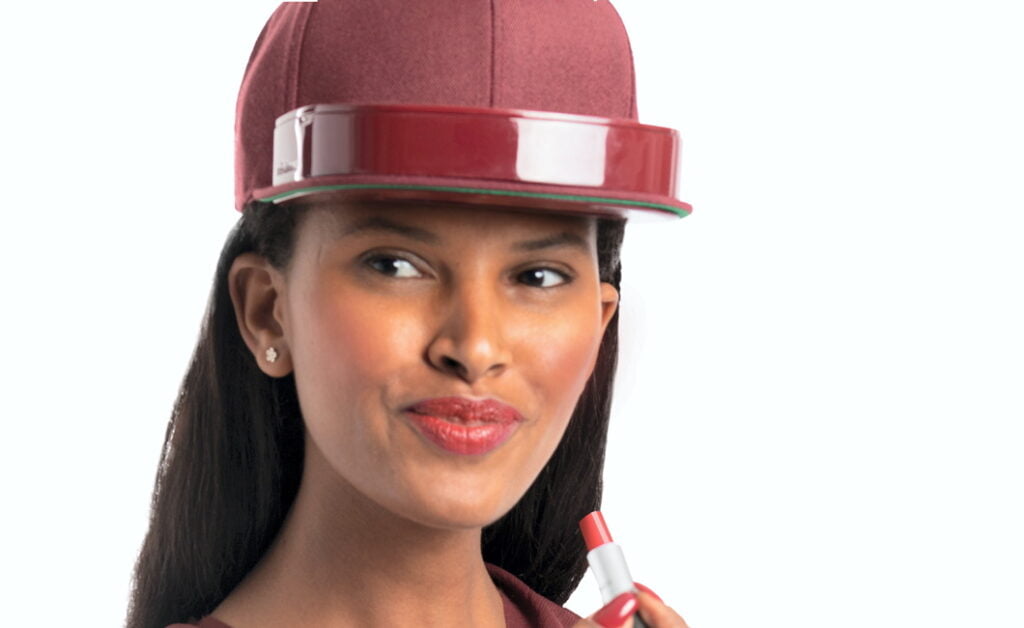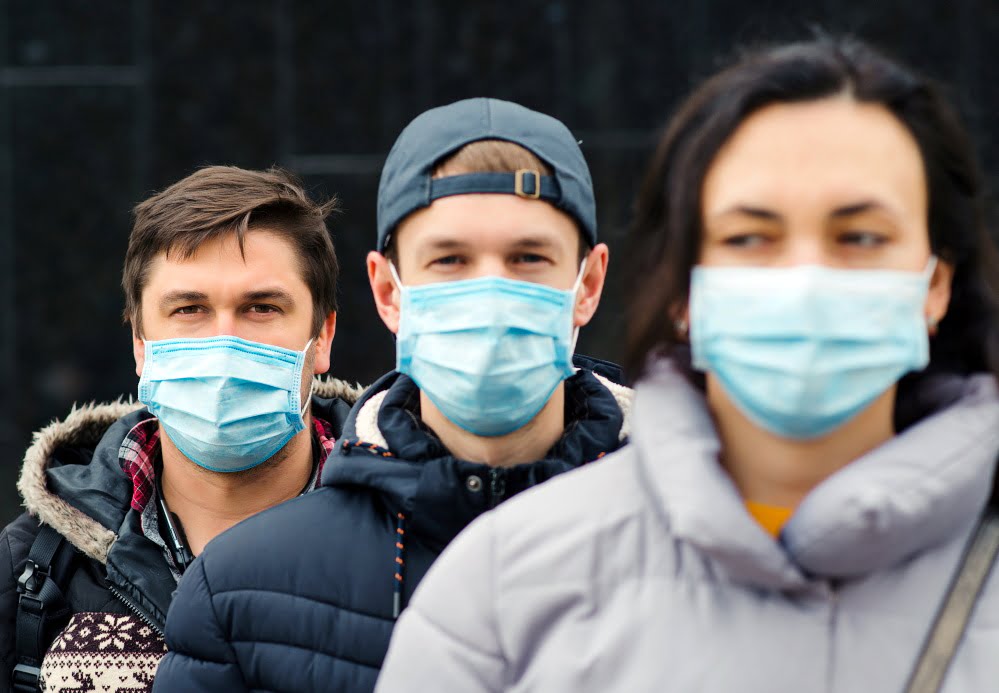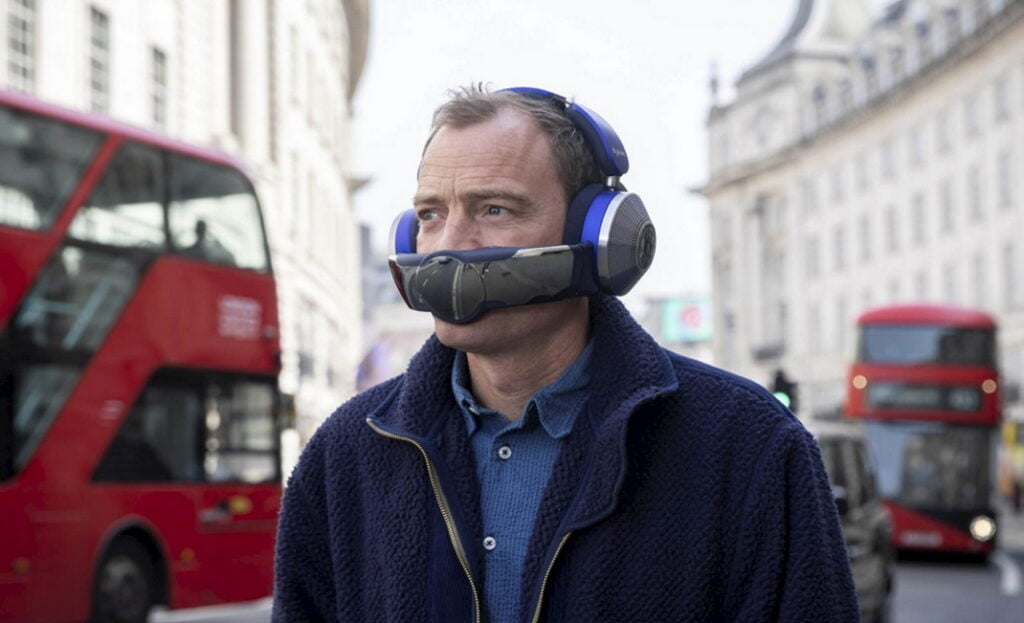Invisible screen of air protects from COVID, flu, and more
It may look like an ordinary baseball cap, but it’s actually an invisible face mask.
The mechanism above the visor houses a specially-miniaturized fan that blows a screen of air across the wearer’s face.
It blocks out virus-laden aerosols and droplets, protecting them, from COVID-19, flu, MERS and other infections.

The “Air-Screen” face mask was jointly invented by Prof Moshe Shoham, best known for developing the SmartAssist robotic guidance system for spine surgery, together with Prof David Greenblatt at at the Technion’s Faculty of Mechanical Engineering, in Haifa.
They took their inspiration from the clean-air systems used in operating theaters, as well as the “screen” or invisible barrier created by air conditioners at supermarket entrances.
During the COVID lockdowns they perfected the design, and they’re now preparing to launch it as a commercial product through a new startup called Wisdome Wearables.
One of the biggest advantages of Air-Screen is that the wearer is protected without having to cover their face. As we all know from COVID, a conversation is hard with a mask, and a meal is impossible.
But the Air-Screen overcomes these problems, and more. It protects the eyes, as well the mouth and nose, it is more sustainable – no more throwing away paper masks – and it doesn’t become hot and uncomfortable to wear. It also does away with constant fidgeting and people sporting a mask on their chin.
A recent study found that only 20 per cent of people in Japan, where the population is considered to be compliant, actually wore their masks correctly during COVID.
The Air-Screen is designed to be either a standalone device that works with the wearer’s own hat, or to be integrated into a cap supplied by the company.
Wisdome Wearables plans to market it initially to nursing homes, universities, retail, restaurants and anywhere else where people are either vulnerable or find themselves in crowded environments.
“The device is deceptively simple,” Prof Shoham tells NoCamels. “We had to design a special air generator and get it to work, to be light enough, to be quiet enough and to work for several hours.

The tiny fan and battery combination weighs around 200 grams, little more than a tube of toothpaste. They operate together in near-silence, and the battery lasts six hours before it needs recharging.
“The idea came from two things,” says Prof Shoham. “First, what’s called the laminar flow in the operating room, where there is a flow of air in between the patients and the surgeon. It has been shown to reduce contamination.
“And second was something you sometimes see in supermarkets when you go from inside to out. There’s a screen of air that separates between the hot inside and the cold outside.
Sign up for our free weekly newsletter
Subscribe“These two ideas came to my mind together and I said maybe we can create a screen of air to protect a person from viruses. At the beginning it was coronavirus, but actually it works on all kinds of viruses, in fact anything that is airborne.”
He teamed up with friend and colleague Prof Greenblatt, head of the Technion’s Flow Control Laboratory, which has its own wind tunnel and is more used to researching the efficiency of turbines.
“We actually quantified the number of aerosol droplets that pass through the screen and we found the Air-Screen is as good as a face mask,” said Prof Shoham.
In tests the Air-Screen protected a mannequin wearer from 62 per cent of droplets and aerosols produced by somebody who coughed or sneezed from a meter away.
It also blocked 99 per cent of outgoing droplets or aerosols from a person who was actually wearing the device, according to an academic paper published in ScienceDirect.
“It doesn’t just block aerosols from come reaching your face, but the air goes through filters, so what you actually you breathe is filtered air,” says Prof Shoham.

“You don’t feel the screen itself because we put it a little bit forward. We did a lot of calculations about the angle to best protect you. All you feel is something very, very delicate on your tip of your nose.”
Earlier this year Dyson, the multinational technology company best known for its vacuum cleaners, announced it would be launching the Dyson Zone – “a wearable purifier, capturing city pollution including gases, allergens and particulate matter”.
The purifier will, curiously, be combined with a pair of noise cancelling, high fidelity over-ear headphones, but Dyson makes no mention of it blocking virus-carrying aerosol or droplets.

The next challenge for Air-Screen is to market its product. “I think it’s going to take us another half a year or so more to get the PPE regulated in Europe, and FDA clearance in the USA can take a year,” says Dr Idit Harel, Co-founder and Executive Director of Wisdome Wearables.
“We’re coming out with very smart protection that protects the eyes, the nose and the mouth and frees up personal expression in enclosed spaces in crowded spaces,” she says.
“The caps are very fashionable and trendy. Down the road expect many versions and many surprises.
“Future products will include electrodes and additional functions for different professions or for youth, which may change the design altogether.”
Related posts

Editors’ & Readers’ Choice: 10 Favorite NoCamels Articles

Forward Facing: What Does The Future Hold For Israeli High-Tech?

Impact Innovation: Israeli Startups That Could Shape Our Future




Facebook comments